Messy mud play and learning tops a bucket list of activities for kids. Like a right of childhood, kids deserve the opportunity to get covered with mud. The good news is kids are wash and towel dry. (Washing machines and rocks aren’t great friends, so make sure you check pockets and rolled up hems before doing a mud load.)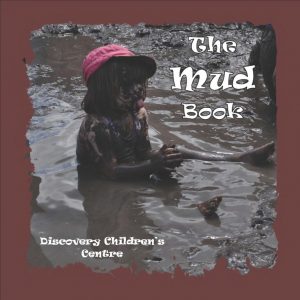
Why does messy mud play appeal to kids?
One of the tools kids have for learning about themselves and their world is their sensory channel. Mud touches exposed skin all over the body. While it hurts when it gets in eyes, and itches insides clothing, it also feels cool and slippery. It’s used in beauty treatments for a reason.
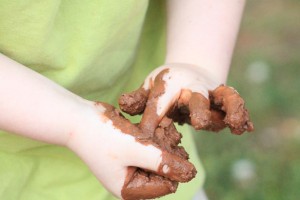 Mud play is active, not only for hands but whole bodies. Jumping over puddles is almost as much fun as jumping in them.
Mud play is active, not only for hands but whole bodies. Jumping over puddles is almost as much fun as jumping in them.
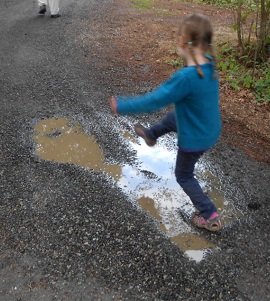
How can kids play with mud?
While this little tyke isn’t messy yet, he likely soon will be. Mud play invites children to explore. Will mud pour? What happens to a mountain of mud when it’s stepped on? Why does a hole dug in mud keep filling with water? There are so many questions kids can ask just waiting to be answered by playing around in the mud. Much of this is linking cause and effect.
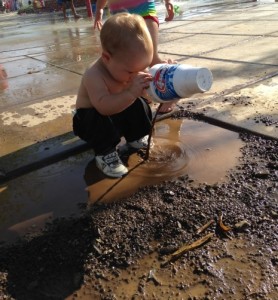 Mud also encourages creating. With spoons, shovels, and old pots and pans, kids can make mud pies and cakes. Or, they may build roads, mountains, towns, and magic potions. A pile of mud decorated with twigs, rocks, and pinecones might be a mud monster. Mud in a pot mixed with nature ingredients might be fairy soup.
Mud also encourages creating. With spoons, shovels, and old pots and pans, kids can make mud pies and cakes. Or, they may build roads, mountains, towns, and magic potions. A pile of mud decorated with twigs, rocks, and pinecones might be a mud monster. Mud in a pot mixed with nature ingredients might be fairy soup.
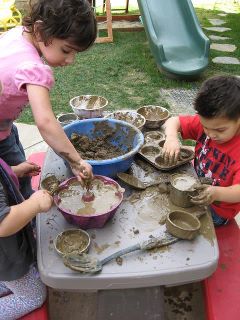
Don’t forget imagination. There’s plenty of opportunity for pretend and imaginative play with messy mud play. Dinosaurs can roam the world in a muddy puddle. Cars and trucks might be small enough for a hand, but big enough to be just like the real ones on a construction site.
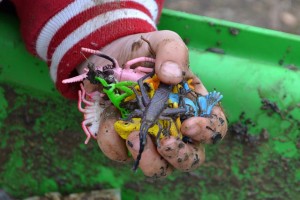
What kind of learning is involved?
While bodies are busy playing in mud, so are brains. The brain is not only processing the information taken in by the senses, it is also solving problems, planning, creating, imagining, and choosing. In addition to the physical and mental aspects, there are social and emotional ones. When playing with others, kids are negotiating, sharing, taking turns, and more. Emotionally, kids cannot always make mud do what they want. They have to learn to adapt what they want to how mud behaves. This needs patience and acceptance. For the most part, this hands-on connection to nature is relaxing because kids have to learn to sometimes let go of what they want. That’s an important lessons for any of us.
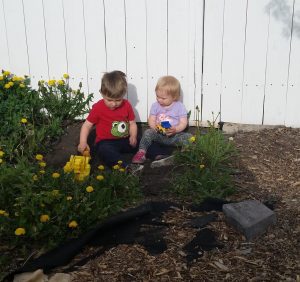
No wonder messy mud play has been part of childhood for hundreds of years. Can it be part of your child’s day?
